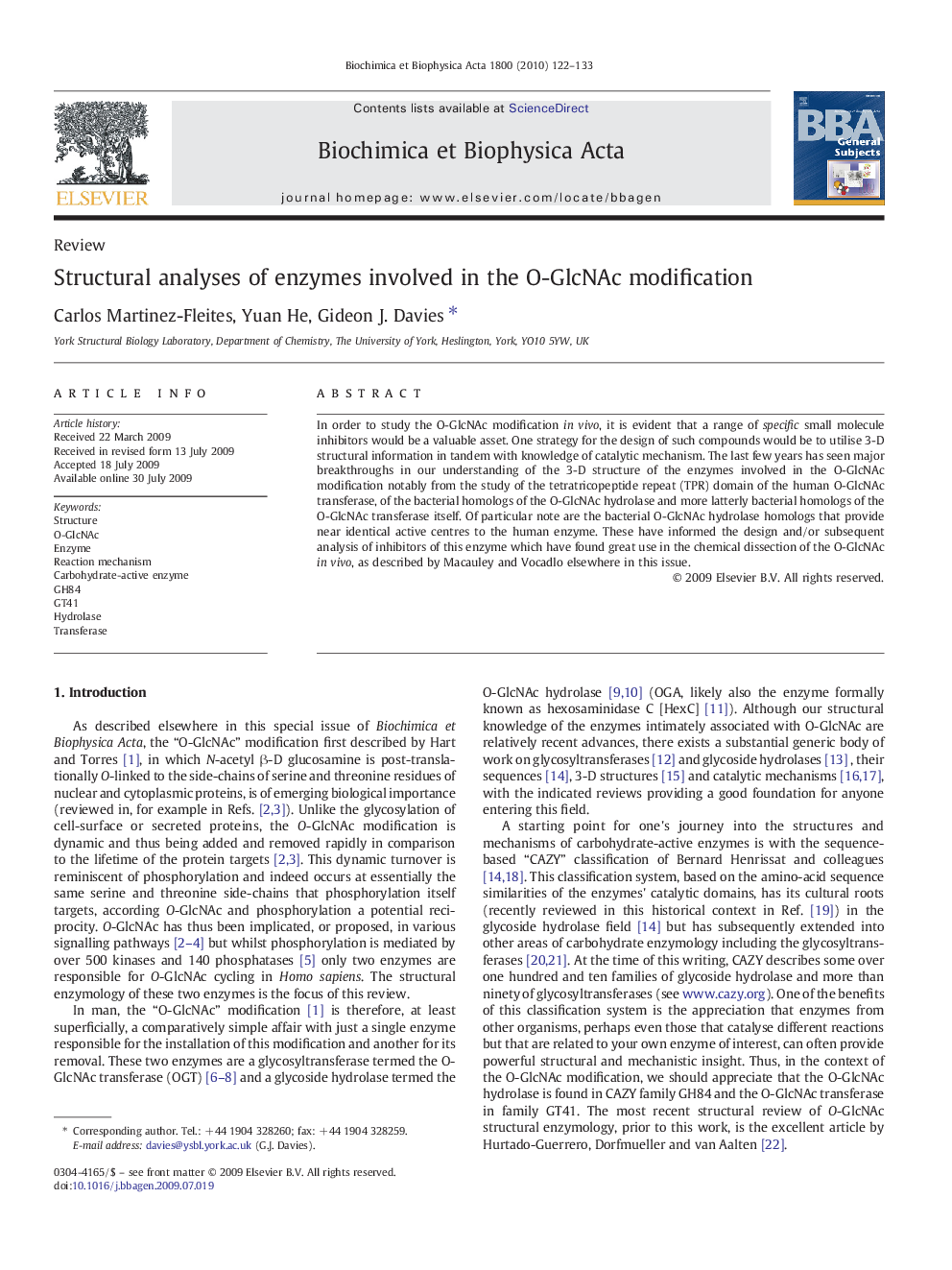| Article ID | Journal | Published Year | Pages | File Type |
|---|---|---|---|---|
| 1948028 | Biochimica et Biophysica Acta (BBA) - General Subjects | 2010 | 12 Pages |
Abstract
In order to study the O-GlcNAc modification in vivo, it is evident that a range of specific small molecule inhibitors would be a valuable asset. One strategy for the design of such compounds would be to utilise 3-D structural information in tandem with knowledge of catalytic mechanism. The last few years has seen major breakthroughs in our understanding of the 3-D structure of the enzymes involved in the O-GlcNAc modification notably from the study of the tetratricopeptide repeat (TPR) domain of the human O-GlcNAc transferase, of the bacterial homologs of the O-GlcNAc hydrolase and more latterly bacterial homologs of the O-GlcNAc transferase itself. Of particular note are the bacterial O-GlcNAc hydrolase homologs that provide near identical active centres to the human enzyme. These have informed the design and/or subsequent analysis of inhibitors of this enzyme which have found great use in the chemical dissection of the O-GlcNAc in vivo, as described by Macauley and Vocadlo elsewhere in this issue.
Related Topics
Life Sciences
Biochemistry, Genetics and Molecular Biology
Biochemistry
Authors
Carlos Martinez-Fleites, Yuan He, Gideon J. Davies,
